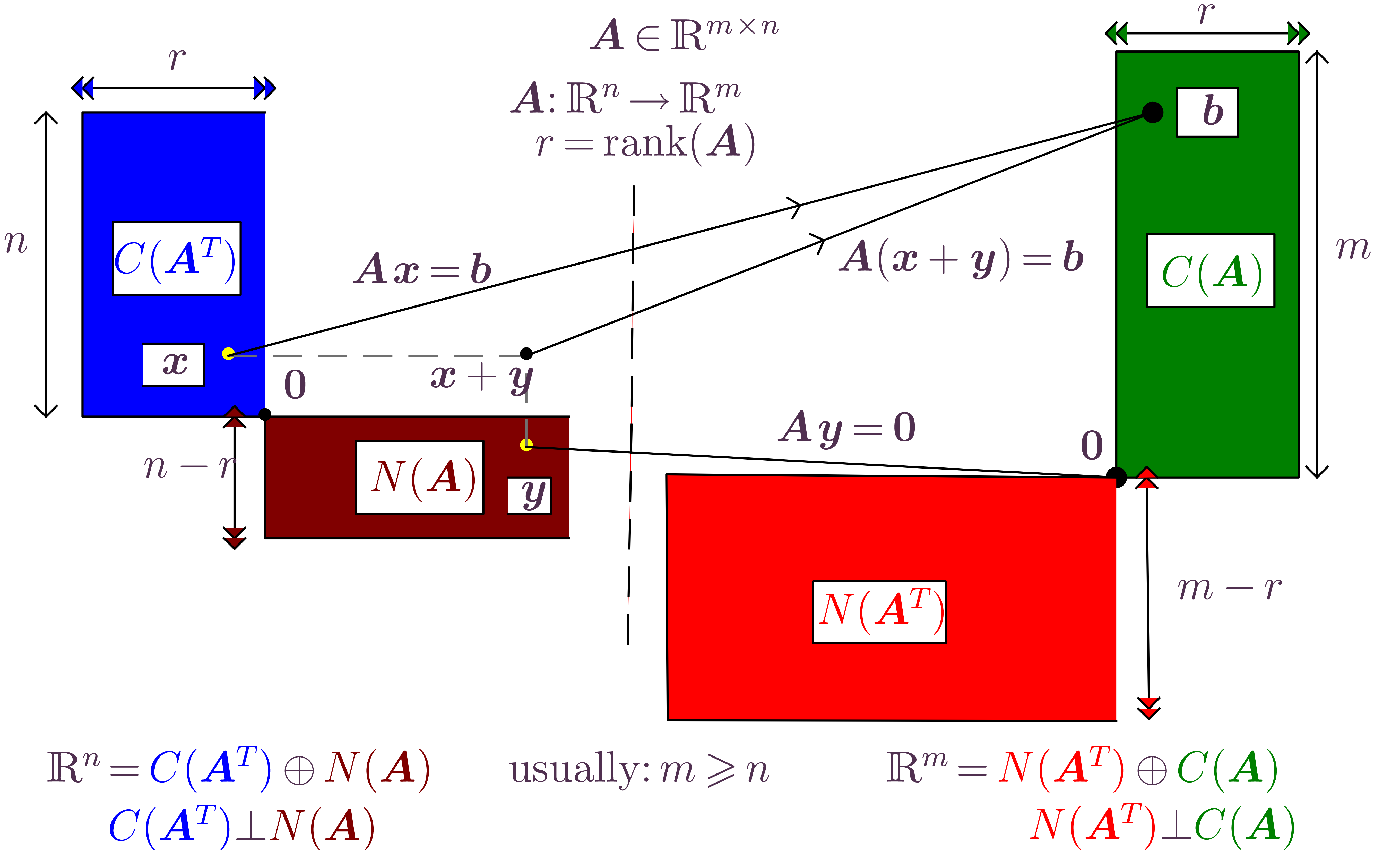Definition.
Given two vector subspaces , of the space , the sum is
the set
Definition.
Given two vector subspaces , of the space , the direct
sum is the set (unique
decomposition)
Definition.
Given two vector subspaces , of the space , the intersection
is the set
Definition.
Two vector subspaces , of the space are orthogonal
subspaces, denoted
if
for any .
Definition.
Two vector subspaces , of the space are orthogonal
complements, denoted ,
if they are orthogonal subspaces and ,
i.e., the null vector is the only common element of both
subspaces.

